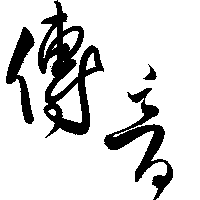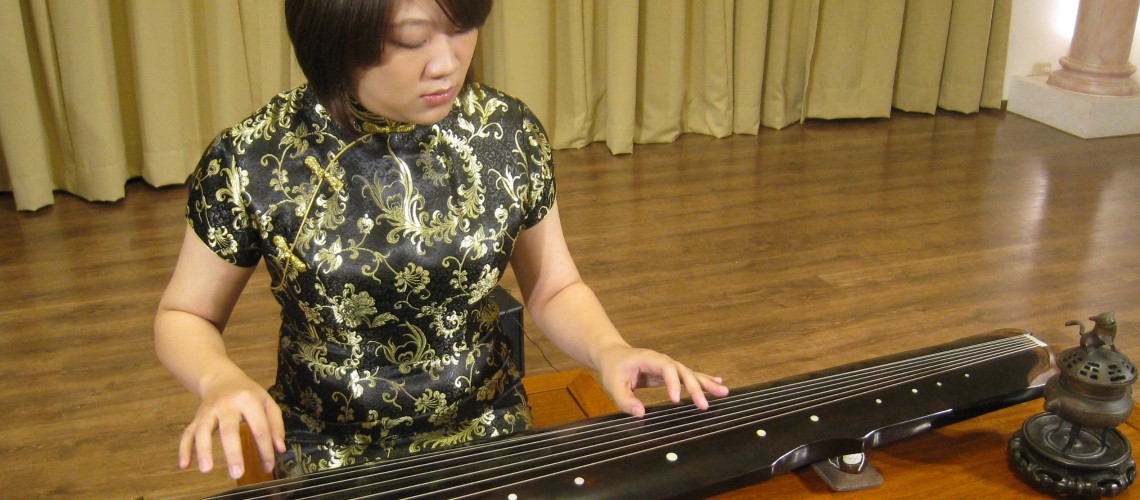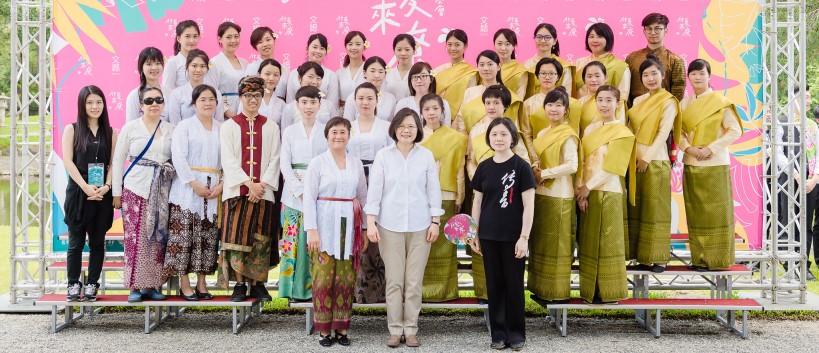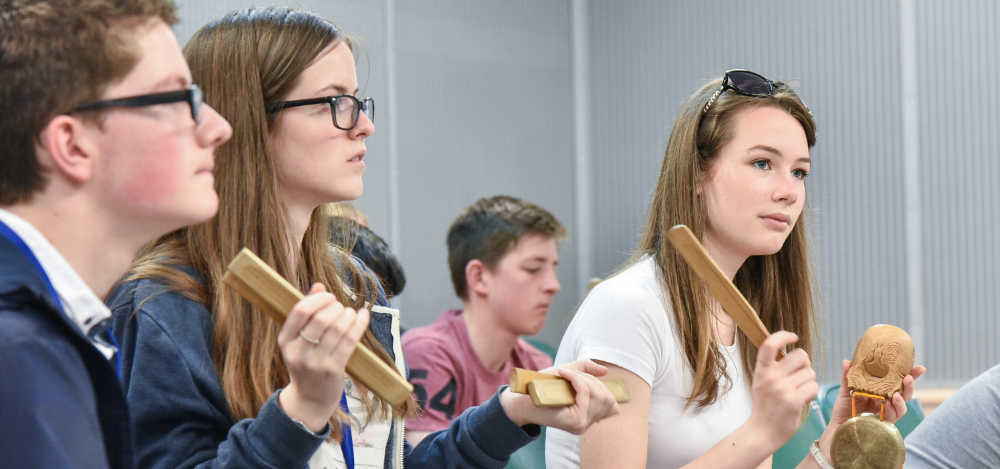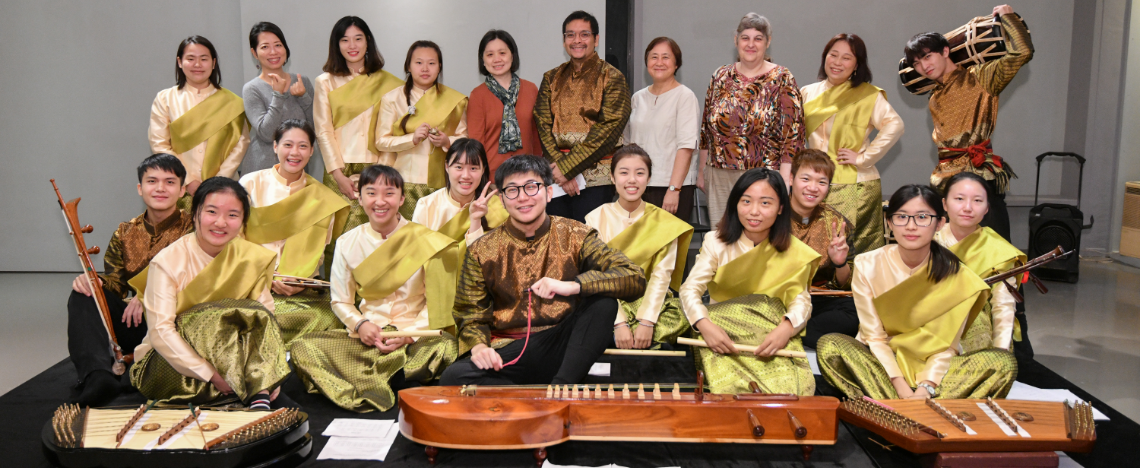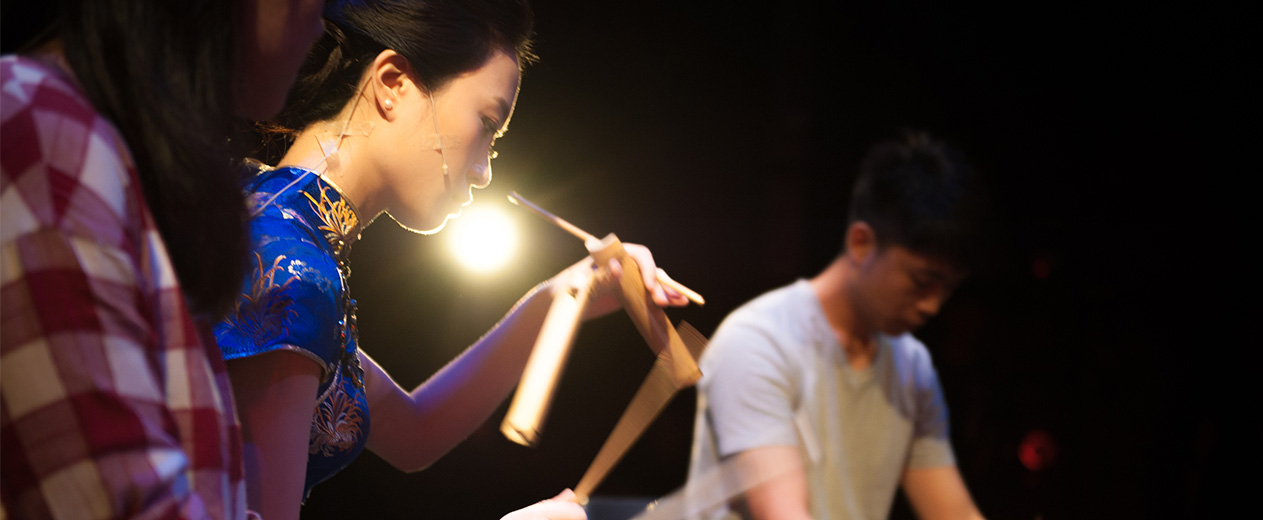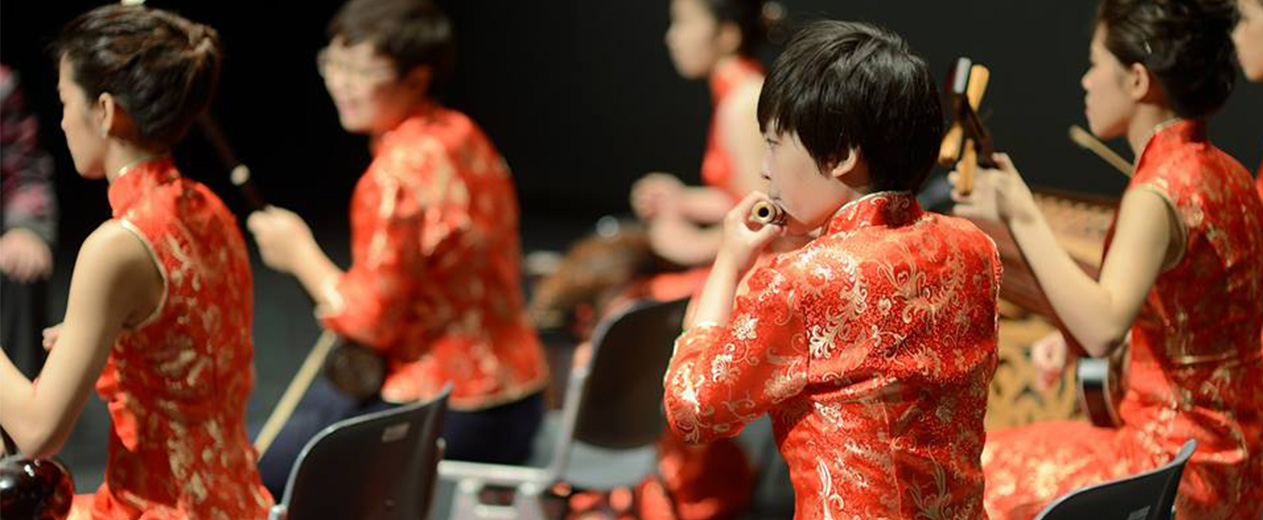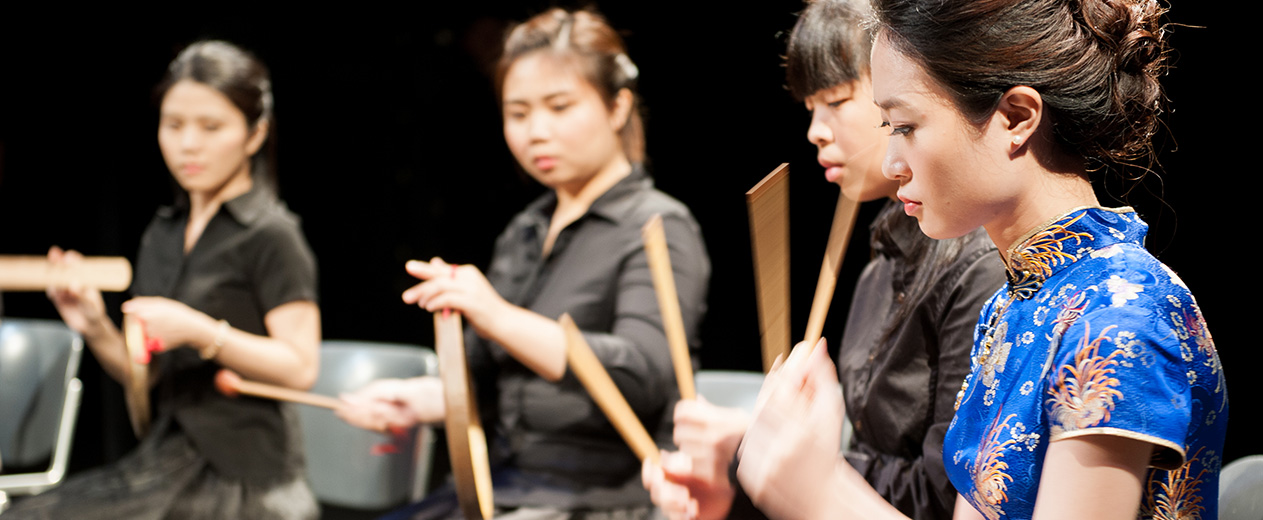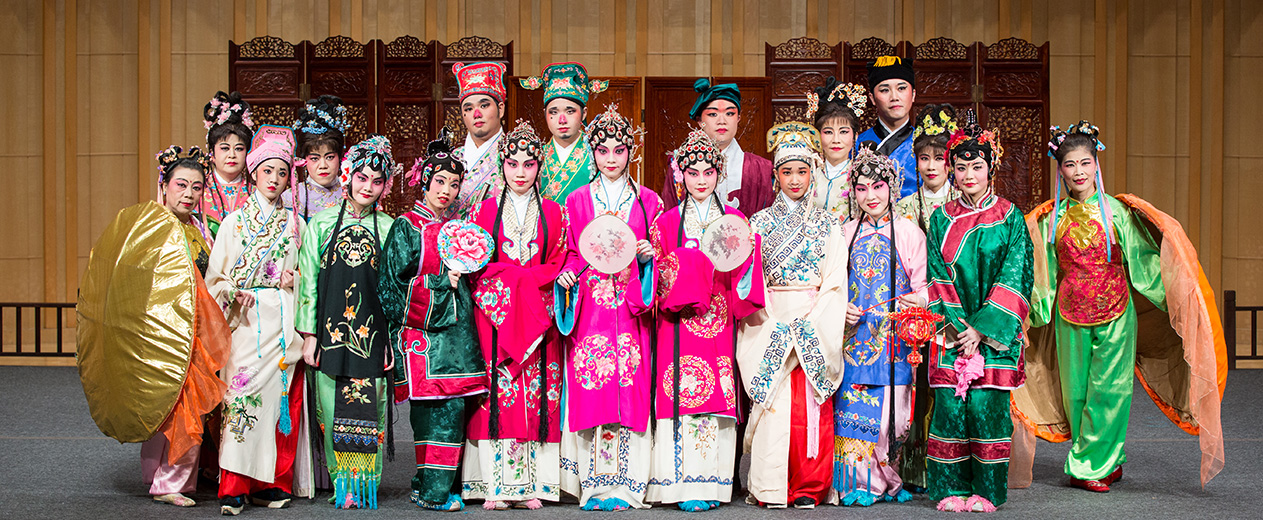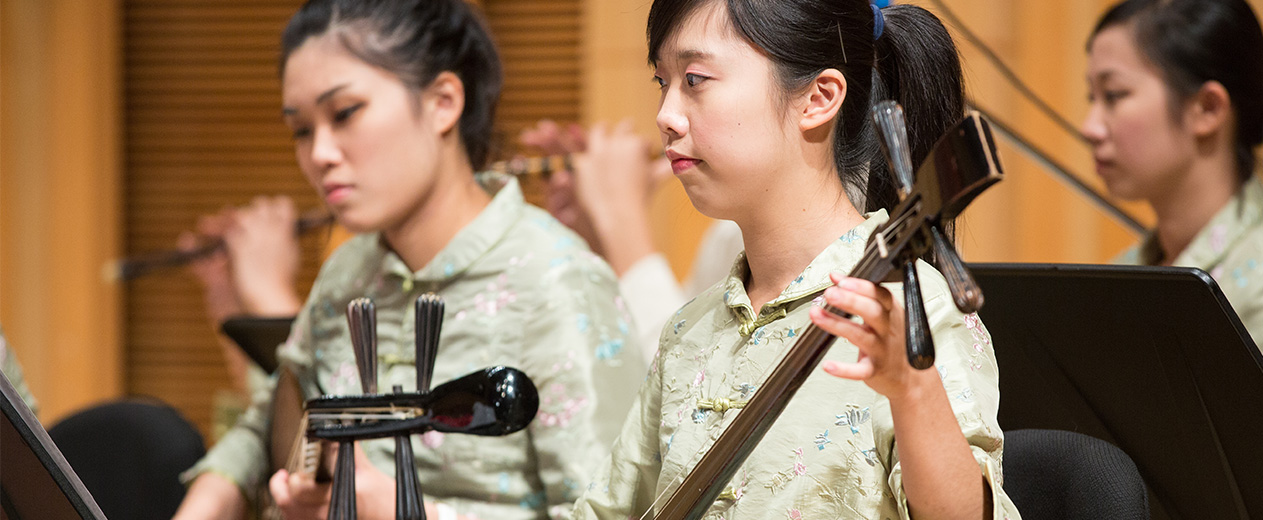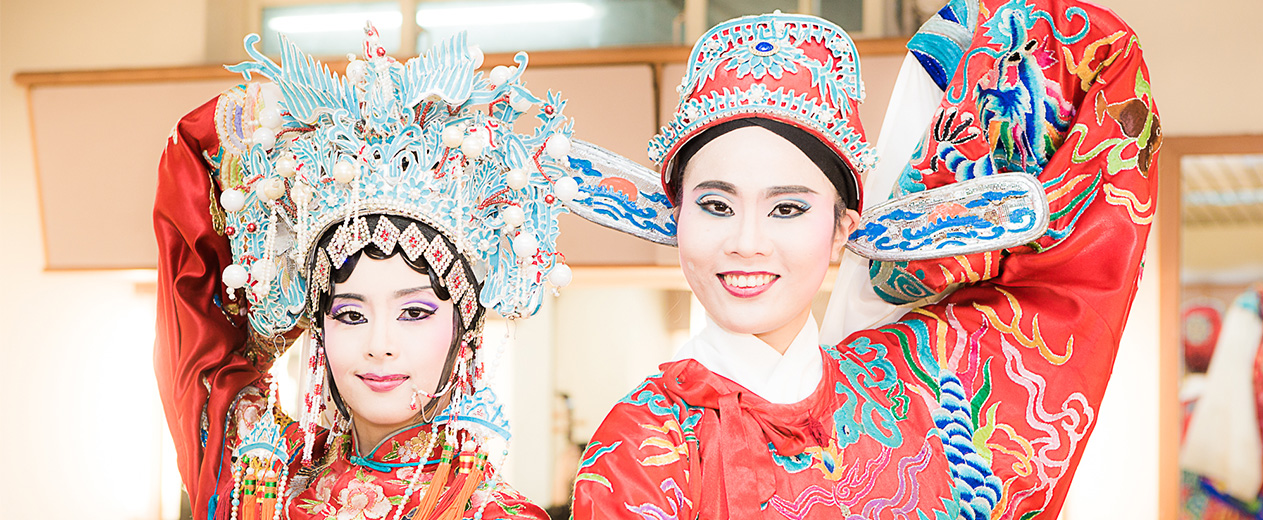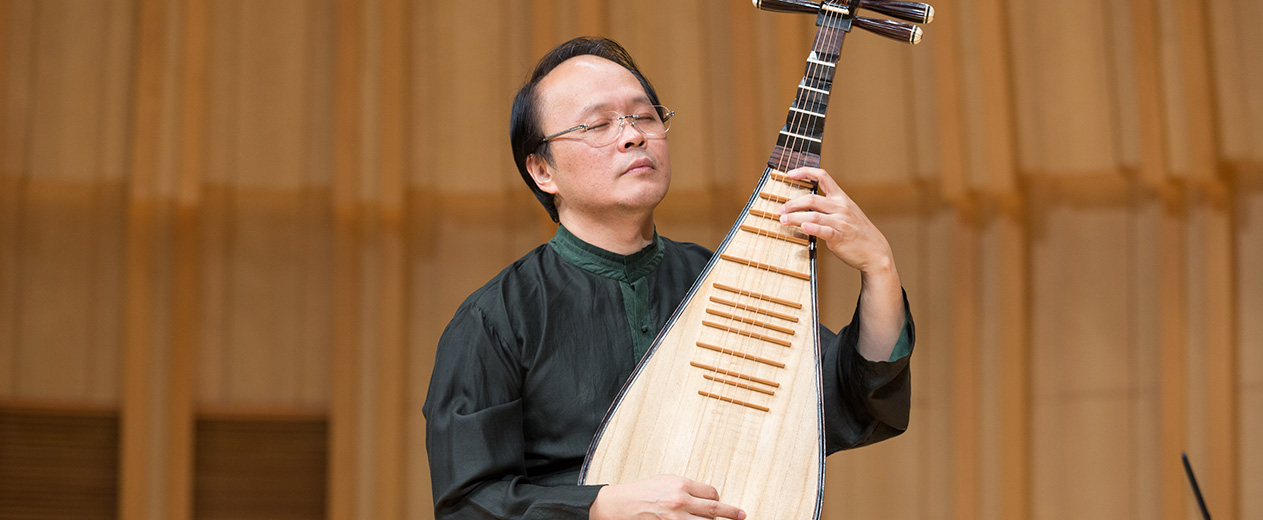View count:
56402
Beiguan Focus
Pak-koán(Beiguan) / LEE, CHING-HUE

Pak-koán was originally imported by immigrants from Fujian province of China starting in the eighteenth century. It has been firmly rooted in Taiwan and is closely related to Han Taiwanese social life. Before the end of the 1960s, pak-koán was very popular in Taiwan and was the most often heard music in Han Taiwanese social lives. It has multiple functions and can be heard at many events such as ritual rites, festivals, ceremonies, processions, celebrations, weddings, funerals, and, at regular rehearsals and performing activities in amateur pak-koán music clubs called khek-koán (曲館) or tsú-tē-koán (子弟館). Pak-koán music groups include amateur clubs and professional troupes. An amateur club presents performances to serve its community and for friendship rather than for income while a professional troupe offers commercial performances. Pak-koán music clubs are organizations and places where pak-koán music is maintained and transmitted. Mostly pak-koán clubs are closely related to local temples, and their members called tsú-tē (子弟) serve their local temples as guards and band-members for local deities in ritual parades.
Pak-koán is a music genre which has a huge scope. Its scope can be defined in both broad and narrow senses. The scope of the narrow sense is mainly maintained in amateur pak-koán music clubs, including four subcategories: hì-khek (戲曲, hereinafter ‘theater music’), iù-khek (細曲, hereinafter ‘refined songs’), paî-chì (牌子, hereinafter ‘percussion and wind ensemble music’), and phóo (譜, hereinafter ‘silk and bamboo ensemble music’). The percussion and wind ensemble music and the silk and bamboo ensemble music are instrumental music, while the theater music and the refined songs are vocal music.
The scope of the broad sense of pak-koán includes the foregoing narrow scope pak-koán and the accompaniment music from other genres that use pak-koán music, such as accompaniments to pòo-tē-hì (布袋戲, hand puppet theater), ka-lé-hì (傀儡戲, stringed-puppet theater), koa-á-hì (歌子戲, Taiwanese opera), Daoist and a sect of indigenized Buddhist ritual music, and various styles of processional ensembles which utilize drums, gongs and cymbals.
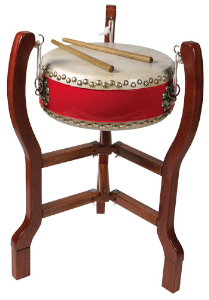
Probably percussion and wind ensemble music is the style of music most often heard in Taiwan. It produces an aura of renau (熱鬧) which literally means hot and loud. The renau is a typical soundscape of pak-koán percussion and wind ensemble music and is a requisite atmosphere in temple festivals. Therefore the pak-koán percussion and wind band is broadly used in various parades, such as parades of temple festivals, funeral processions, and other kinds of parades. It is also used as an emblem of commencement in ritual rites, ceremonies, and performances.
Pak-koán practitioners learn percussion music by using a mnemonic device for percussion in which rhythmic patterns are chanted in onomatopoeia words. They call the onomatopoeia rhythmic patterns ‘kóo-si’ (鼓詩), which literally means poems for drum, and count them by the same unit as for counting flowers, ‘lúi’ (蕊). These two terms reveal how pak-koán practitioners identify the beauty of the percussion and wind ensemble music in pak-koán.
Another category of instrumental music of pak-koán is the silk and bamboo ensemble music. It is played by ‘silk’ (fiddles and lutes) and ‘bamboo’ (the flute) instruments and is also applied to accompany theater music and refined songs in pak-koán. The fiddles are thê-hiân (提絃, also called khak-á-hiân, 殼子絃) and hô-hiân (和絃). Both of them are two-stringed fiddles with resonators made of coconut shells. Since there is no standard ensemble in pak-koán, the performing setting and orchestration of pak-koán ensembles are varied as well as the musical instruments and capabilities of music clubs. Although the instruments and instrumentation vary between regions and ensembles, the thê-hiân is the leading instrument in the silk and bamboo ensemble. Of the lutes, there are, mainly, sam-hiân (三絃, the three-stringed plucked-string instrument) and iâng-khîm (洋琴, hammered dulcimer); besides, other string instruments, such as the pî-pê (琵琶, pipa in Mandarin) and sa-cheng (抓箏, a 16-stringed zither), are optional.
Theater music from the vocal music genre is also called lān-thân-hì (亂彈戲, or luantanxi in Mandarin) when it is performed by professional troups; or, tsú-tē-hì (子弟戲), when it is performed by amateur music clubs. It includes three styles: pān-sian- hì (扮仙戲, ritual plays), kóo-lōo-hì (古路戲, or hok-lōo-hì福路戲, old style theater music), and sin-lōo-hì(新路戲, or se-phî-hì西皮戲, new style theater music). The ‘old style’ refers to music that moved to Taiwan earlier than the ‘new style’.
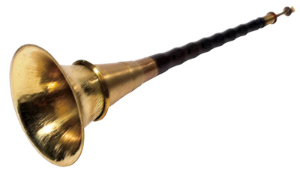
Pak-koán theater music has two types of performances: staged performances and non-theatrical performances. The tradition of staged performances has declined while non-theatrical performances are well-maintained by many of the pak-koán clubs.
Among the features of pak-koán theater music, there are two characteristics which must be illustrated here. They are first the mechanism of adding vocables to the lyrics and, secondly, its beautiful tunes of changqiang(唱腔, melodic patterns).
Firstly, there are two voice types related to the role-construction of pak-koán theater music, which are the chhoo-kháo (粗口, loud voice) and the iù-kháo (細口, refined voice). The loud voice is employed by the old/strong male and old female characters while the refined voice is employed by refined characters, including yang female and yang, refined male roles such as intellectuals. The loud voice is projected in the singer’s original voice, while the refined voice is a falsetto voice, used as a marker of refinement. The main feature of pak-koán theater music is the mechanism of adding vocables of either ‘a’ for loud voice or ‘i’ for refined voice to the lyrics. The mechanism of adding vocables on one hand, enhances the features of loud and refined voice and thus reinforces the characters they apply to; on the other hand, it also aids in voice projection. This mechanism produces a sound image of each type of character and marks the uniqueness of pak-koán theater music.
Secondly, similar to many regional theater genres in China, pak-koán theater music applies banqiang (melo-metric patterns) to form the melodies in a theatrical repertoire. The melo-metric patterns used in pak-koán old style theater music include metrical and non-metrical (i.e. free rhythm) tunes. The latter consists of four unique patterns: chái-bán (彩板), kín-bán (緊板, ‘kín’ lit. means ‘fast’), bān-tiong-kín (慢中緊, ‘bān’ lit. means ‘slow’), and kín-tiong-bān (緊中慢). Chái-bán is a free rhythmic and extremely emotional pattern, only half a phrase rather than a complete phrase. The kín-bán is for fast but free rhythm tunes. Both the singing and drum parts of the kín-bán are in free rhythm compared to the bān-tiong-kín and kín-tiong-bān where only the singing part is in free rhythm. Bān-tiong-kín lit. means to hit the drum slowly while the singing part is tight and fast; the kín-tiong-bān is opposite and translates to hit the drum tightly but sing slowly. In terms of the metrical patterns, the pîⁿ-pán (平板) and liû-súi (流水) are two dominant metrical tunes used in the old style theater music. Both of them are in a four-beat meter. The tune of pîⁿ-pán is descriptive while the liû-súi is more expressive than the pîⁿ-pán. Although their origins are not yet clear, the melo-metric patterns utilized in the old style theater music are well-maintained in Taiwan and thus mark the particularity of pak-koán. In terms of the melo-metric pattern used in the new style theater music, mainly it consists of se-phî (西皮) and jī-hông (二黃) melodic patterns. Both of them are closely related to the xipi(西皮) and erhuang (二黃) used in jingju (京劇).
Last are the refined songs, iù-khek. The ‘iù’ means delicate and exquisite. It refers to the singing technique that requires a delicate expression. ‘Khek’ means songs. It is sung by a solo singer accompanied by a silk and bamboo ensemble. The singer plays a clapper while he/she is singing. The clapper is also played during preludes or interludes to lead the tempo of the ensemble. Concerning the sources of the refined songs, a significant part of them can be traced back to folk tunes in the Ming (1368-1644) and Qing (1644-1911) dynasties.
Pak-koán predominantly uses a pentatonic scale; however, a heptatonic scale is also utilized. It utilizes a simple format of gongchepu (工尺譜) which is one of the Chinese character notation systems. It merely notes skeletal melodies; therefore, performers must add their own elaboration, based on technical convenience, personal interpretation and taste. In other words, the notation allows space for individual practitioners’ interpretation.
 In summary, pak-koán is one of the dominant music genres in Taiwan. It has a huge scope that consists of percussion and wind ensemble music, silk and bamboo ensemble music, theater music, and refined songs. Among these subcategories, the old style theater music applies a mechanism of adding vocables that features the art of vocal projection of pak-koán. Pak-koán has multiple functions and is closely related to Han Taiwanese social life. It has been rooted in Taiwan for about 300 years and is still maintained in pak-koán amateur music clubs that are most often associated with local temples. Pak-koán not only fulfills the needs of communities and local temples, but is also a type of recreation for its practitioners. In other words, through playing pak-koán, people serve their communities and deities and thus confirm their social identity on one hand. On the other hand, they enjoy their lives, both musical and communal.
In summary, pak-koán is one of the dominant music genres in Taiwan. It has a huge scope that consists of percussion and wind ensemble music, silk and bamboo ensemble music, theater music, and refined songs. Among these subcategories, the old style theater music applies a mechanism of adding vocables that features the art of vocal projection of pak-koán. Pak-koán has multiple functions and is closely related to Han Taiwanese social life. It has been rooted in Taiwan for about 300 years and is still maintained in pak-koán amateur music clubs that are most often associated with local temples. Pak-koán not only fulfills the needs of communities and local temples, but is also a type of recreation for its practitioners. In other words, through playing pak-koán, people serve their communities and deities and thus confirm their social identity on one hand. On the other hand, they enjoy their lives, both musical and communal. Nowadays the above mentioned four categories of pak-koán are well maintained in Taiwan. It has been transmitted to young generations by pak-koán clubs, and particularly the Traditional Music Department of the Taipei National University of the Arts. Pak-koán is one of the major programs in the Department. In addition, several Taiwanese composers apply pak-koán music to their compositions to embed Taiwaneseness in their works, for example, Dialect I—Association of Pei-kuan (1995, for violin and orchestra) and Weald Aspiration (1999, for marimba and three percussionists), both are composed by Lai Deh-Ho, and Heterophony: Concerto for Orchestra with Zheng, Piano, Organ and Traditional Beiguan Ensemble (2005) composed by Pan Hwang-Long.


